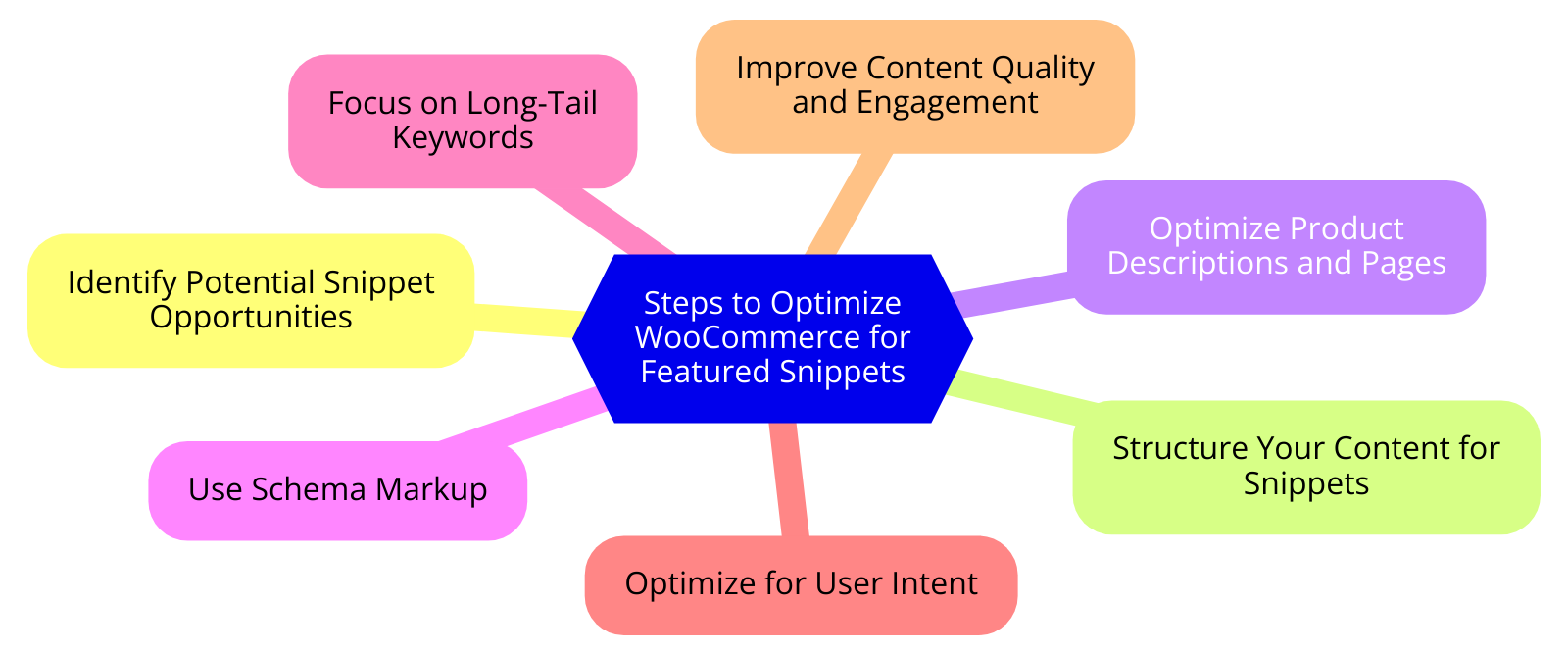In the rapidly evolving landscape of SEO, featured snippets have become a powerful tool to enhance visibility and drive traffic. For eCommerce websites using WooCommerce on WordPress, leveraging featured snippets can significantly boost SEO performance. This detailed article explores how featured snippets can improve WooCommerce SEO and offers practical steps to achieve them.
What Are Featured Snippets?
Featured snippets are short, concise answers displayed at the top of Google’s search results, often referred to as “Position Zero.” They provide users with quick information directly on the search page without needing to click through to a website. These snippets can take various forms, including paragraphs, lists, tables, and videos.
Why Featured Snippets Matter for eCommerce
- Increased Visibility: Featured snippets appear above the top organic search results, providing prime real estate on the search engine results page (SERP).
- Higher Click-Through Rates (CTR): Although users get some information directly from the snippet, the curiosity often drives them to click through to the website for more details.
- Authority and Trust: Being featured by Google as a snippet signals authority and trustworthiness, enhancing your brand’s reputation.
- Voice Search Optimization: Featured snippets are frequently used for voice search results, catering to the growing number of voice search users.
Types of Featured Snippets Beneficial for WooCommerce
- Paragraph Snippets: Short explanations or definitions. Ideal for product descriptions, FAQs, and how-to guides.
- List Snippets: Ordered or unordered lists. Perfect for step-by-step instructions, top product lists, or feature highlights.
- Table Snippets: Data presented in tabular form. Useful for product comparisons, pricing tables, or specifications.

Steps to Optimize WooCommerce for Featured Snippets
-
Identify Potential Snippet Opportunities
- Use tools like Ahrefs, SEMrush, or Google’s Keyword Planner to identify keywords that already trigger featured snippets.
- Look for question-based queries, long-tail keywords, and informational searches relevant to your products.
-
Structure Your Content for Snippets
- Answer the Question Clearly: Provide direct, concise answers to common questions related to your products or industry.
- Use Headers (H2, H3): Break down content with clear, descriptive headers to improve readability and signal to search engines the structure of your content.
- Include Lists and Tables: Format information using lists or tables where applicable to target list and table snippets.
-
Optimize Product Descriptions and Pages
- Concise Descriptions: Write clear, concise, and informative product descriptions that answer potential customer queries.
- FAQs: Include a FAQ section on product pages with well-structured questions and answers.
- How-to Guides: Create detailed how-to guides related to your products, formatted with step-by-step instructions.
-
Use Schema Markup
- Product Schema: Implement Product schema markup to provide search engines with detailed information about your products.
- FAQ Schema: Use FAQ schema to structure your frequently asked questions, increasing the chances of appearing in a featured snippet.
- How-To Schema: Apply How-To schema for instructional content to enhance visibility in snippet results.
-
Focus on Long-Tail Keywords
- Long-tail keywords are more specific and often less competitive, increasing the chances of ranking for featured snippets.
- Use these keywords in your content, especially in headers and introductory sentences.
-
Optimize for User Intent
- Ensure your content aligns with the search intent of your target audience. Provide comprehensive answers that fulfill the user’s query.
- Consider the type of information users seek at different stages of the buyer journey and tailor your content accordingly.
-
Improve Content Quality and Engagement
- High-Quality Content: Produce high-quality, valuable content that engages users and encourages longer on-page time.
- Multimedia Elements: Incorporate images, videos, and infographics to enhance content quality and user engagement.
- Internal Linking: Use internal links to guide users to related content, improving the overall site structure and user experience.
Measuring the Impact of Featured Snippets
- Google Search Console: Monitor performance metrics like impressions, clicks, and average position for queries that trigger featured snippets.
- Analytics Tools: Use tools like Google Analytics to track changes in organic traffic, bounce rates, and conversion rates from snippet-optimized pages.
Conclusion
Featured snippets offer a unique opportunity for WooCommerce stores on WordPress to improve their SEO performance. By strategically targeting and optimizing for featured snippets, eCommerce websites can achieve higher visibility, increased traffic, and improved authority. Implementing the above strategies will help you harness the power of featured snippets, driving more potential customers to your WooCommerce store and ultimately boosting sales.
By staying updated with the latest SEO trends and continuously optimizing your content, you can maintain a competitive edge and ensure your WooCommerce store thrives in the ever-evolving digital landscape.






